Introduction
High sensitivity Sr isotope ratio measurements using TIMS can be used to evaluate sub millimetre isotope variations in zoned minerals and fluid inclusions. Sample sizes of a few nanograms of Sr are generated and so “every ion counts” to get a precise measurement.
In this preliminary study a Phoenix TIMS was used to analyse 9.4ng loads of Sr on rhenium using a Ta activator to enhance the ionization. The concentration has been verified as 9.42ng by isotope dilution analysis by Prof. M. F. Thirlwall at Royal Holloway, University of London. The activator was prepared using a method described in http://earth.boisestate.edu/isotope/labshare/
Mass Spectrometry
An aiming intensity of one volt 88Sr was chosen to maximize the time until evaporation. Baselines were measured at the start of the analysis for 30 seconds. Peak centring occurred at the start of each block of data. Ion beam focussing did not occur during data collection.
A three cycle acquisition was used for this analysis, i.e. three static arrays where 87Sr, 86Sr, 88Sr and 85Rb were measured simultaneously but cycling between three different collector sets. Integration time was 10 seconds for each array with a two second dwell time between to allow for resistor decay.
A fractionation corrected 87Sr/86Sr is produced for each cycle. The consistency of results across the three cycles reflects the uniformity of the efficiency between the Faradays and the quality of the peak flat. Averaging the results for the three cycles also averages out collector amplifier gain and efficiency variations although unlike a conventional multidynamic analysis it does not eliminate them.
To test the efficacy of the multi-static approach a multidynamic analysis was also made at the same time.
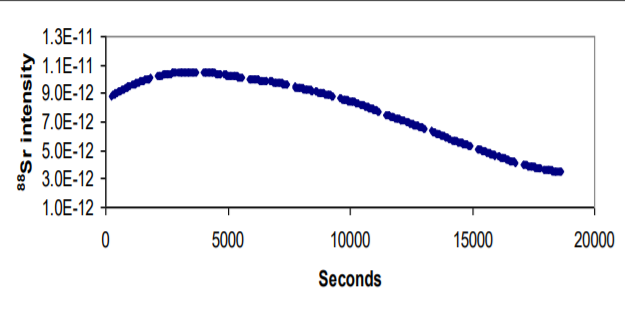
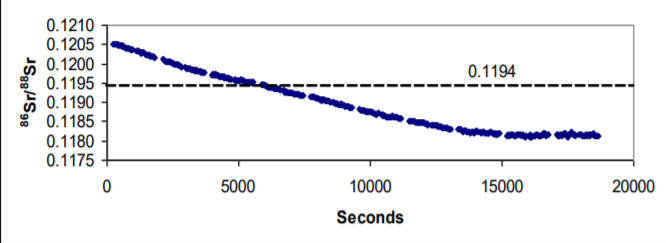
Results
Data collection over 2 to 3 hours was typical (Figure 1), ion beams were stable and accurately focussed. The mean ion/atom efficiency was 2.1% on 10 filaments. (Table 1). Mass fractionation during the analysis (Figure 2), was corrected using an exponential fractionation law (Table 2 and 3).
Table 2 shows the results of static measurements. The mean 87Sr/86Sr of each of the static arrays was 0.710230+/-26ppm 2RSD with each of the arrays within error of this number. This indicates there are no efficiency irregularities across the collector array.
Table 2 and Figure 3 show the results of multidynamic measurements.
The first double collector dynamic measurement (S1&S2) has a mean value of 0.710241+/-27ppm 2RSD (power law corrected), and is within error of the second measurement. The average of the two has a 87Sr/86Sr of 0.710246+/-26ppm 2RSD. The exponential corrected data is 0.710235+/-26ppm 2RSD. The lower ratio being due to the large fractionation correction produced by the extreme 86Sr/88Sr. Essentially the dynamic and static average data are indistinguishable from each other.
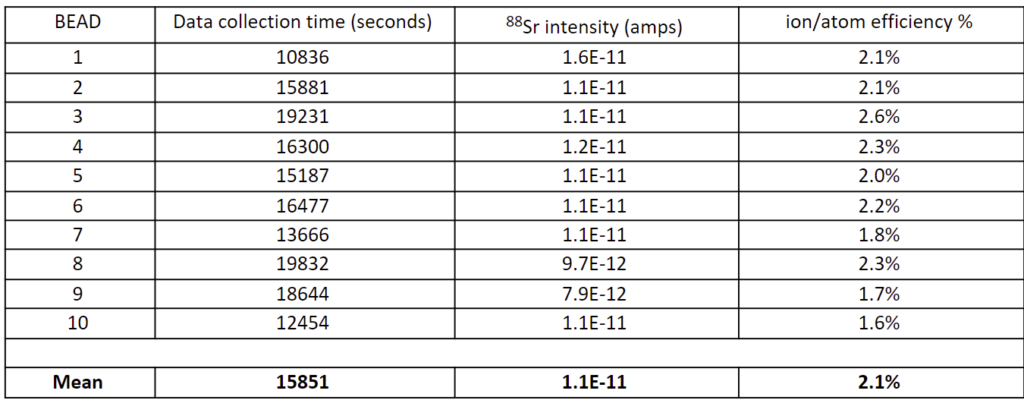
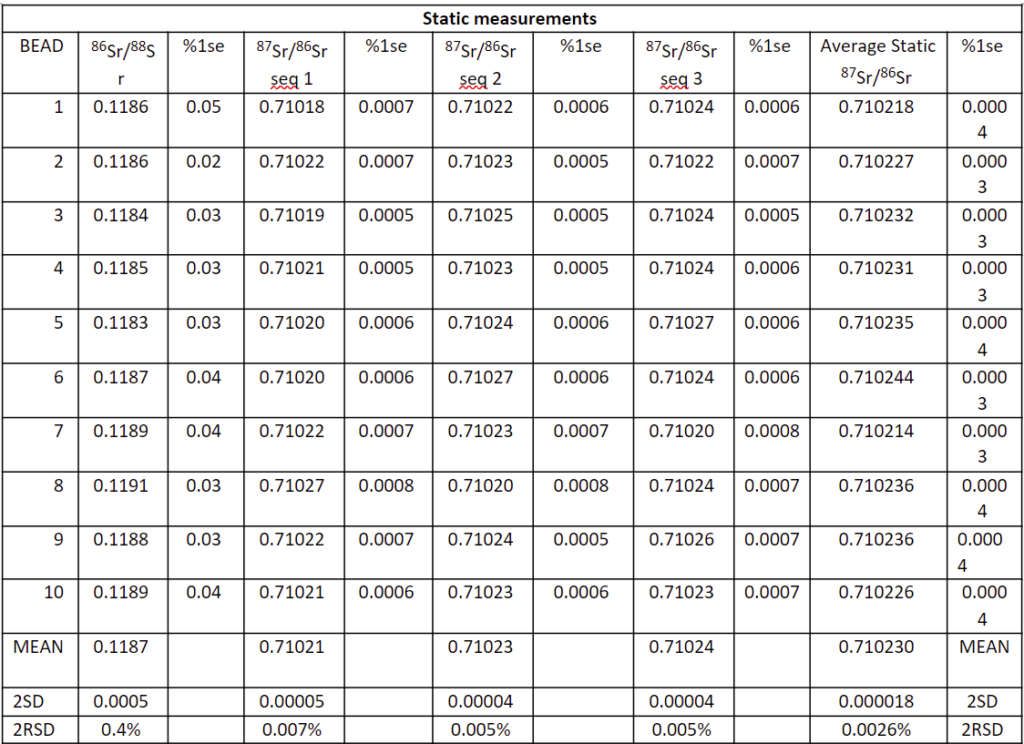
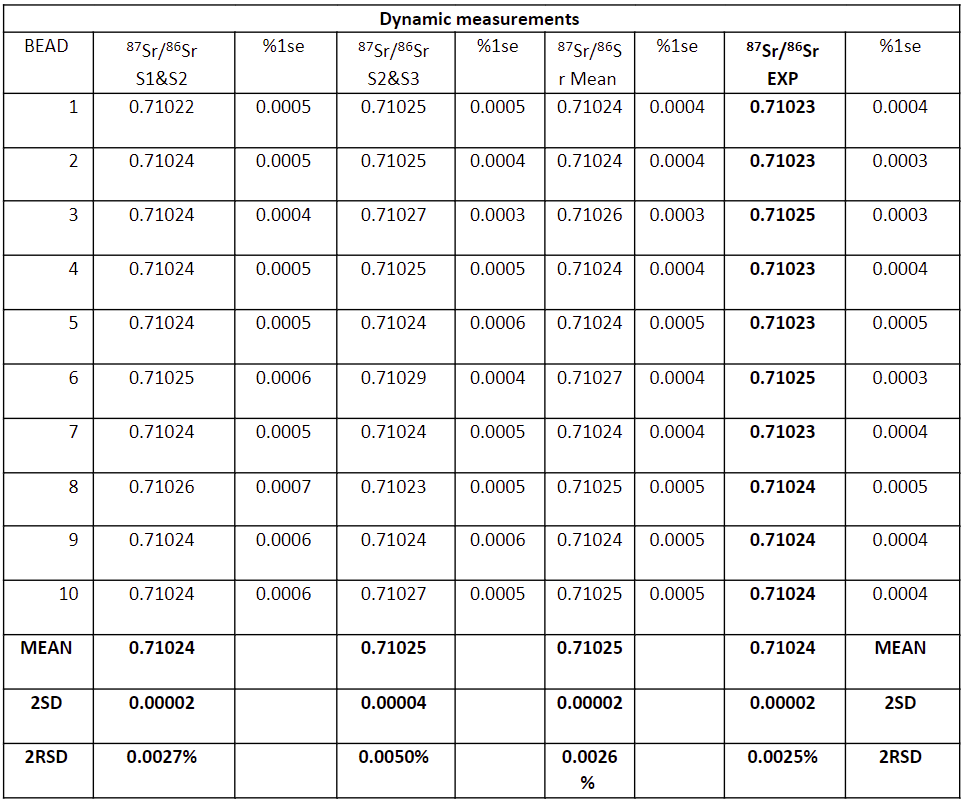
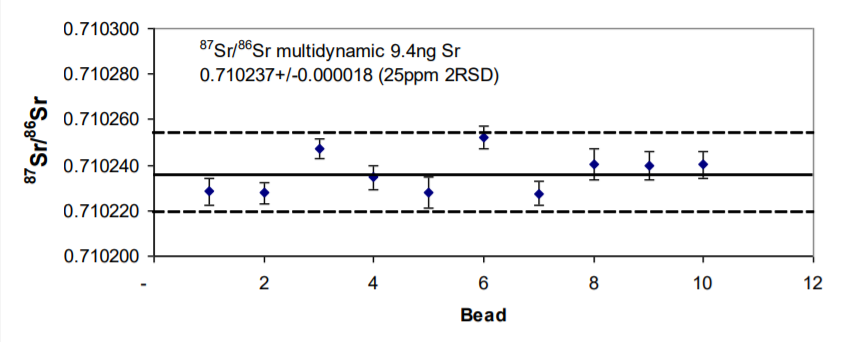
Conclusions
25ppm 2 RSD precision has been obtained on <10ng of NBS987 with an ion/Atom efficiency of 2.1% +/-0.5% n=10 or 1 ion per 50 atoms loaded. This measurement efficiency does not include ions used during focussing.
Acknowledgements
We would like to thank Professor Matthew Thirlwall of Royal Holloway, University of London for verifying the concentration of the solution used in this work.
Download Application Note
Download the complete Application Note: Sr on sub 10ng sample loads